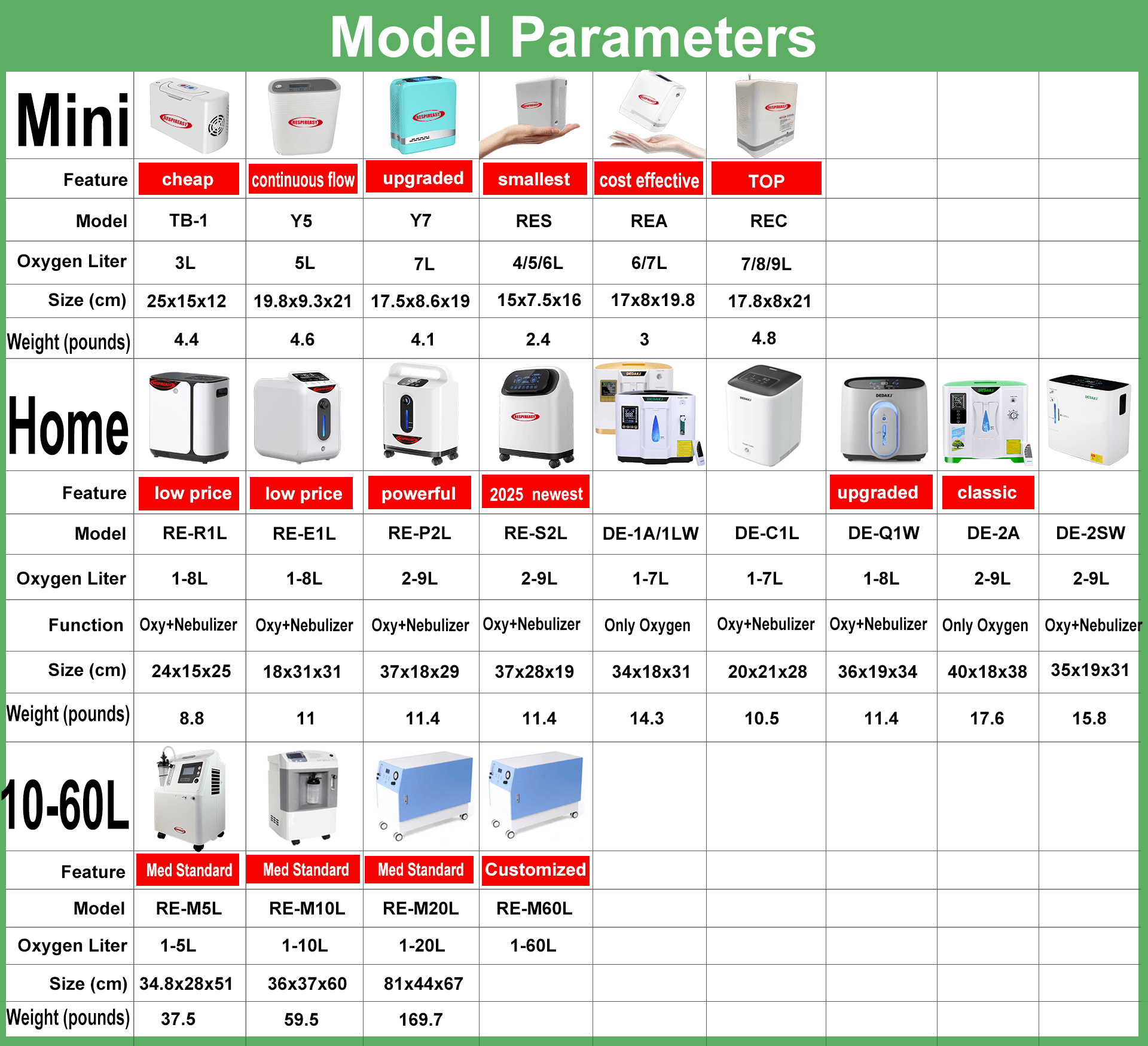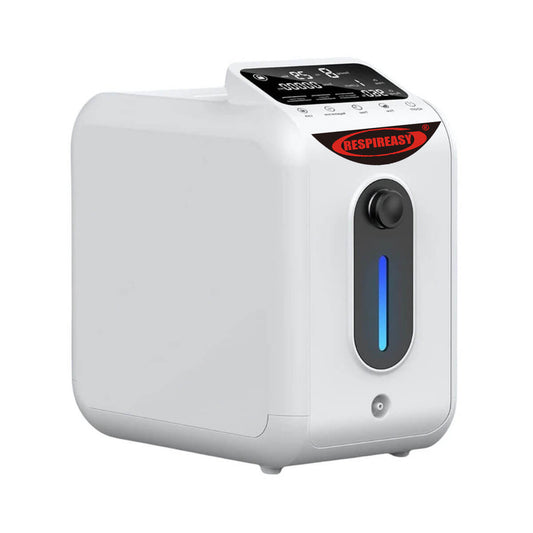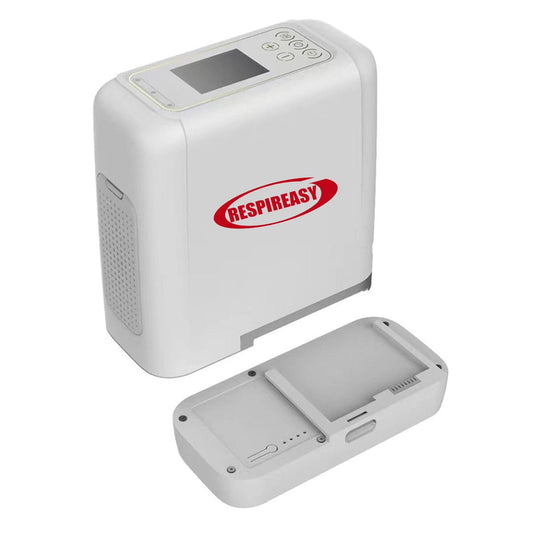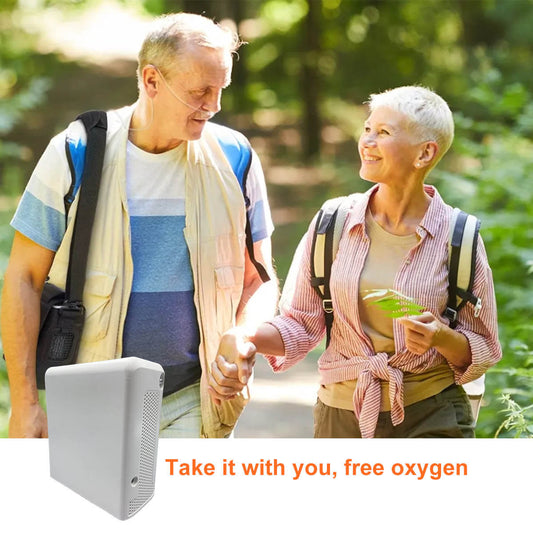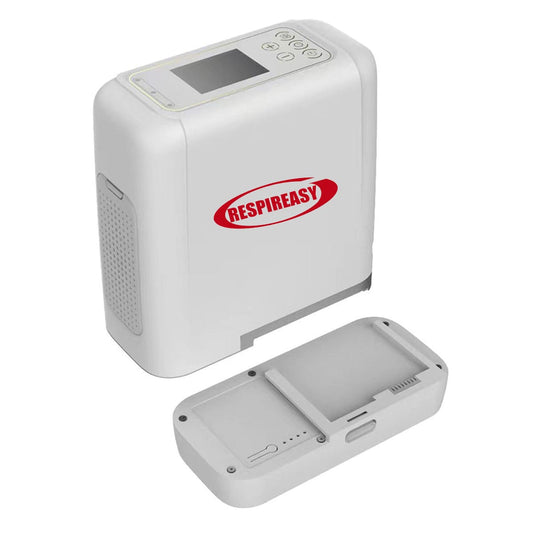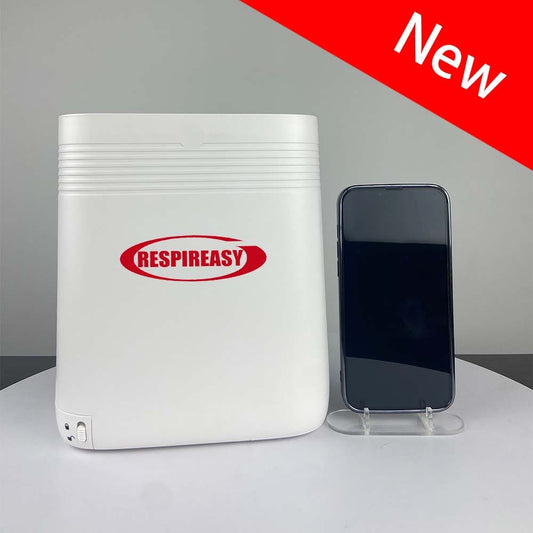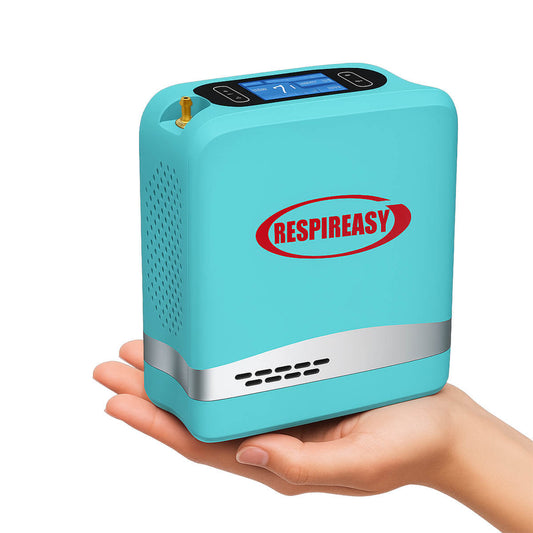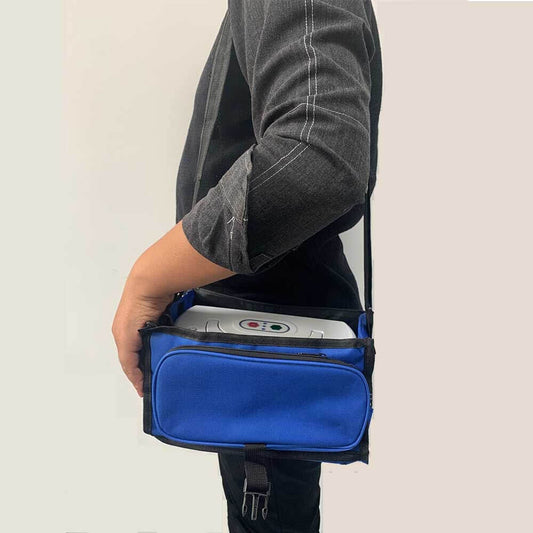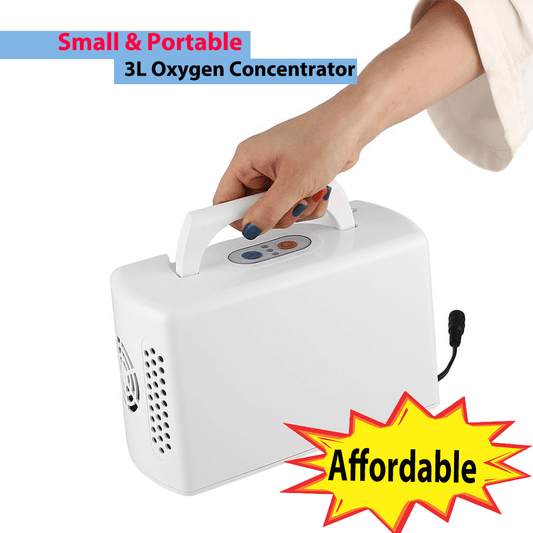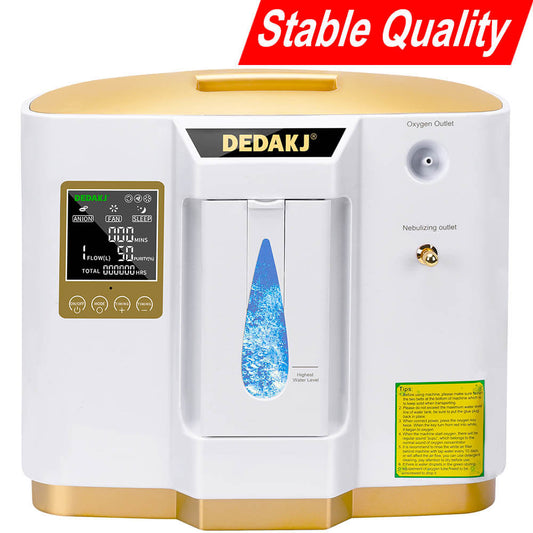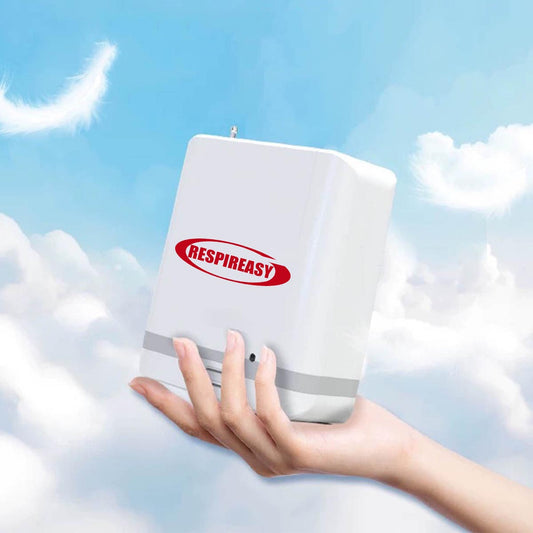Guía de selección de concentradores de oxígeno DEDAKJ para el hogar
Al elegir un concentrador de oxígeno para el hogar , es probable que te sientas abrumado por información como el precio, la marca, los modelos de 3L/5L, etc.
Esperamos que esta guía de selección le sea útil.

I) Principio del concentrador de oxígeno DEDAKJ para el hogar
Los concentradores de oxígeno DEDAKJ para uso doméstico utilizan el principio de adsorción por oscilación de presión (PSA). Un compresor comprime el aire, que luego se hace pasar a través de un tamiz molecular. El nitrógeno y el oxígeno tienen diferentes propiedades de adsorción, lo que permite separar el nitrógeno. Se trata de un proceso de producción de oxígeno puramente físico, sin consumibles ni generación de gases residuales.
Por lo tanto, los componentes principales de un concentrador de oxígeno DEDAKJ son: compresor y tamiz molecular. El principio de funcionamiento de un concentrador de oxígeno DEDAKJ es la producción física de oxígeno, sin materias primas ni consumibles.
II) Clasificación del concentrador de oxígeno DEDAKJ para el hogar
Se dividen en modelos de oxígeno estacionarios de sobremesa y modelos de oxígeno portátiles.
- Y desde el siguiente enlace, puede comparar todos los modelos DEDAKJ para obtener el concentrador de oxígeno más adecuado: https://dedakjoxygenconcentrators.com/pages/compare-dedakj-oxygen-concentrators-home-care-portable-travel-and-medical-use-machines
1) Modelos de oxígeno estacionarios de escritorio , según el caudal... Los concentradores de oxígeno DEDAKJ están disponibles en modelos de 1 litro, 2 litros, 3 litros, 5 litros y 10 litros (el caudal aquí se refiere al caudal máximo que garantiza una concentración de oxígeno del 90%, no al caudal máximo ajustable).
En cuanto al precio, los concentradores de oxígeno DEDAKJ de 1 a 2 litros generalmente cuestan menos de 500 dólares, los modelos de 3 litros rondan los 800 dólares, los modelos de 5 a 10 litros oscilan entre los 1000 y los 3000 dólares, y los modelos de 20 litros son más caros.



2) Los concentradores de oxígeno portátiles DEDAKJ se desarrollaron para solucionar el problema de transportar oxígeno durante los viajes. Funcionan con el mismo principio que los modelos de sobremesa, pero debido a su pequeño tamaño, no pueden proporcionar una producción continua de oxígeno. En cambio, emiten pulsos, inyectando instantáneamente una cantidad fija de oxígeno en respuesta a la inhalación del usuario. Están disponibles en 3, 5, 6 y 7 niveles de intensidad. Dado que la oxigenoterapia pulsada es más eficiente, un dispositivo de 3 niveles equivale generalmente a un modelo de sobremesa de 3 litros, y uno de 5 niveles equivale a un modelo de sobremesa de 5 litros.
Los principales usos de los concentradores de oxígeno portátiles DEDAKJ son la inhalación temporal de oxígeno durante viajes al aire libre y durante viajes a gran altitud.
III) Consideraciones clave para elegir un concentrador de oxígeno DEDAKJ
1) Caudal: Considere el caudal de oxígeno requerido por el usuario, dejando un margen. Por ejemplo, si el usuario suele necesitar entre 1,5 y 2 litros, una máquina de 3 litros es suficiente; si necesita entre 2 y 3 litros, se recomienda un concentrador de oxígeno DEDAKJ de 5 litros .
2) Duración: Considere la duración diaria de la ingesta de oxígeno del usuario y el rendimiento del concentrador de oxígeno DEDAKJ . Para unas pocas horas al día, un concentrador de 3 litros es suficiente; para más de 10 horas, se recomienda un concentrador de 5 litros.
3) Ruido: Si el usuario es sensible al ruido, tenga en cuenta el nivel de ruido de la máquina. La mayoría de los concentradores de oxígeno DEDAKJ funcionan a 50-60 decibelios, mientras que los modelos silenciosos pueden alcanzar los 40-45 decibelios. Los compresores de cuatro cilindros más recientes pueden incluso alcanzar los 30 decibelios.
4) Tamaño: El tamaño del concentrador de oxígeno DEDAKJ no es realmente tan importante. Los fabricantes suelen hacer las máquinas grandes porque utilizan componentes de mayor calidad (compresor, tamiz molecular), y el mayor tamaño también facilita la disipación del calor y el aislamiento acústico.
5) Marca: Elegir un fabricante especializado en concentradores de oxígeno DEDAKJ generalmente garantiza una mejor calidad. El servicio posventa también será mejor.
5) Circunstancias individuales: Para la oxigenoterapia de mantenimiento de salud simple, si la saturación de oxígeno en sangre suele ser normal, se puede considerar un concentrador de oxígeno DEDAKJ de 1 o 2 litros; sin embargo, si la saturación de oxígeno en sangre suele ser inferior al 94%, entonces se debe comenzar con un concentrador de oxígeno DEDAKJ de al menos 3 litros .
6) Funciones adicionales: Visualización en tiempo real de la concentración de oxígeno (para comprender el estado de la producción de oxígeno), nebulización (para nebulización ocasional, función de respaldo), indicaciones de voz (las indicaciones de voz son útiles para personas con problemas de visión), medidor de flujo electrónico (para un ajuste preciso del flujo), control remoto, temporizador.
7) Uso combinado: Cuando se utilice con un ventilador, se debe elegir al menos un concentrador de oxígeno DEDAKJ de 5 litros ; cuando se utilice con un dispositivo de terapia de humidificación de alto flujo, se recomienda un concentrador de oxígeno DEDAKJ de 10 litros .
IV) Consejos útiles:
Al comprar un concentrador de oxígeno DEDAKJ , se recomienda adquirirlo directamente en la tienda oficial. Escuche el sonido del aparato en funcionamiento y verifique su tamaño, peso y calidad de fabricación . Esto le brindará mayor seguridad en su compra.
































